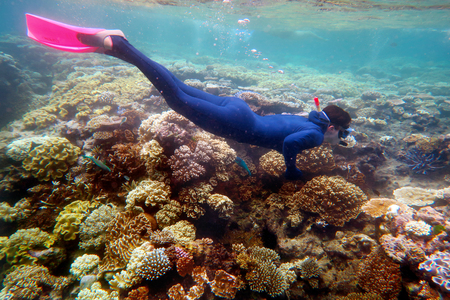Scientific claims are asserting that climate change is affecting destinations around the world and the effects are happening faster than previously thought.
Conde Nast traveler compiled a list of places to see before they’re lost to climate change
The Dead Sea is shrinking at a rate of some 3.3 feet a year; the body of water has already lost one-third of its surface area since development in the region started earlier this century, and sinkholes are appearing in spots where the water has receded. Experts estimate that if it continues to disappear at its present rate, the Dead Sea could be completely dry by 2050.
The Alps – The European mountain range stretches across eight countries and provides some of the most sought-after slopes in the world. With increasing temperatures, however, significant snowmelt continues to shorten the season for winter sports.
The Great Barrier Reef—located off the northeast coast of Australia—is the largest coral reef system in the world. Rising ocean temperatures have caused coral bleaching in vast portions—a condition in which the coral turns white and is prone to mass die-offs. Recent studies have revealed that more than 90 percent of the Great Barrier Reef has experienced bleaching to some degree.
The Amazon
The largest rainforest on Earth, covers roughly 40 percent of South America. Climate change has made the Amazon a fragile habitat. Extreme droughts have left tree species throughout the tropical jungle parched, leaving them vulnerable to large-scale dieback—as well as more susceptible to forest fires.
Venice
As ocean levels rise, Venice inches toward more serious inundation. Activists have taken on the challenge, investing in advanced flood gates and other technologies to stymie the impending swells, but only time will tell how these systems fare.
The Rhone Valley
Situated in the south of France, is among the most vaunted winemaking regions in the world. Covering a corridor of more than 120 miles in length. As global temperatures rise, making the environment inhospitable for grapevines, many experts predict production will shrivel and winemakers will creep further north toward cooler climates.
Key West
The southernmost city in the United States faces challenges ahead: The Army Corps of Engineers estimates that the sea level in the Florida Keys will rise 15 inches over the next 30-odd years. With flooding already wreaking regular havoc on busy Duval Street, the race is on to save the city from submersion.
The Maldives
In the Indian Ocean, is made up of a series of ring-shaped islands formed from coral with year-round temperatures that range from 81–84 degrees. The Maldives is also the lowest-lying country in the world, however, and risks vanishing entirely as climbing tides are already displacing locals. In response, the island nation has taken its predicament seriously, with officials pledging to make the country carbon neutral by 2019.
Alaska
With its proximity to the fast-thawing Arctic, Alaska is already experiencing major changes in the form of coastal erosion, sea ice retreat, and permafrost melt. In Glacier National Park and beyond, the state’s many ice caps are receding at extraordinary rates, triggering landslides so intense they register on the Richter scale.
Napa Valley
Napa County alone is home to more than 1,000 commercial wine producers. Like the Rhone Valley, however, the temperate climate is undergoing change that has the potential to disrupt the industry—from hotter weather to extended droughts.
Mumbai
Home to more than 18 million people, is one of the world’s most populous cities. Unfortunately, warnings of sea level rise from climate change, which without proper preparation could leave major parts of the city underwater in future decades.

